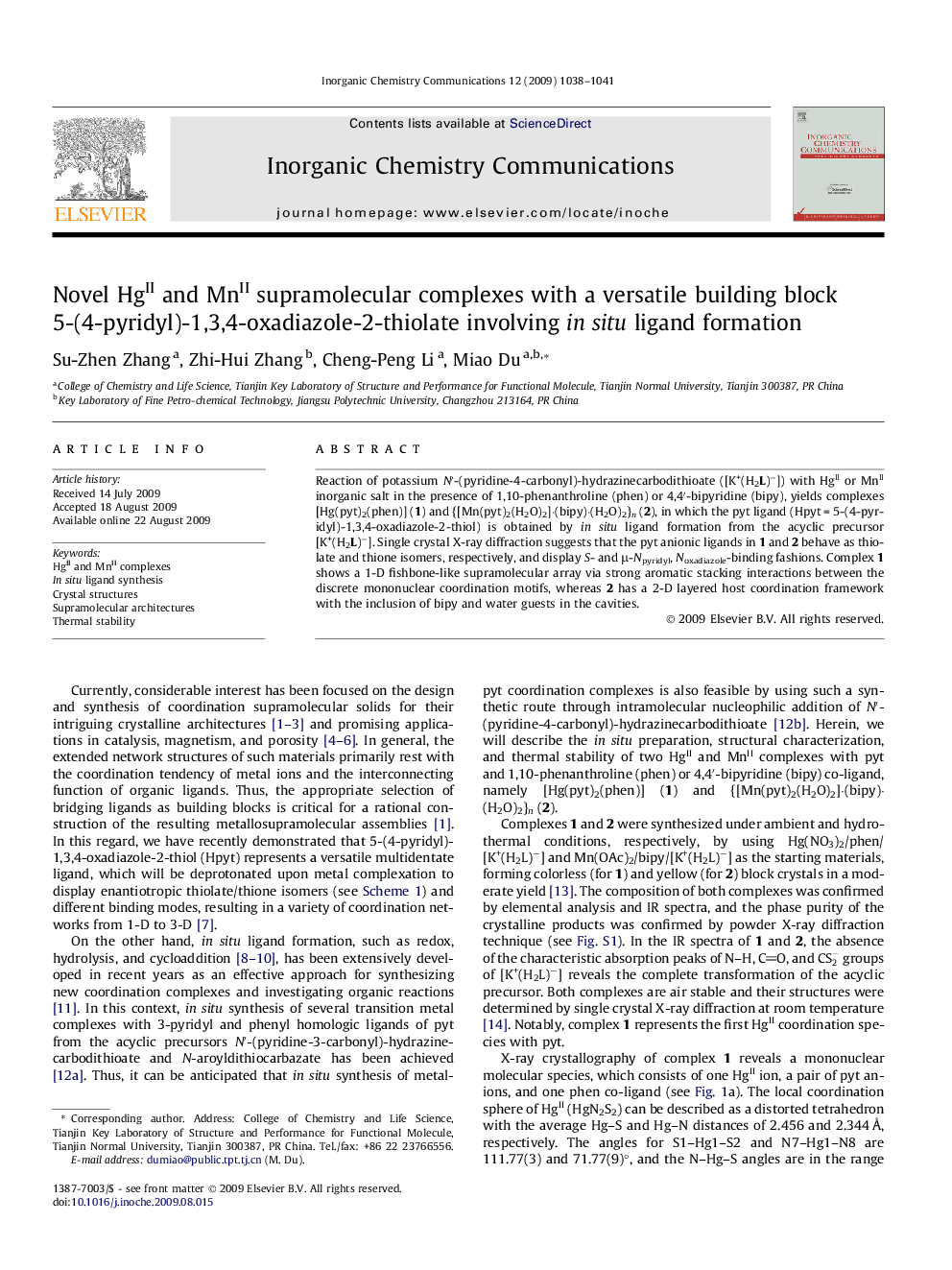| Article ID | Journal | Published Year | Pages | File Type |
|---|---|---|---|---|
| 1303083 | Inorganic Chemistry Communications | 2009 | 4 Pages |
Reaction of potassium N′-(pyridine-4-carbonyl)-hydrazinecarbodithioate ([K+(H2L)−]) with HgII or MnII inorganic salt in the presence of 1,10-phenanthroline (phen) or 4,4′-bipyridine (bipy), yields complexes [Hg(pyt)2(phen)] (1) and {[Mn(pyt)2(H2O)2]·(bipy)·(H2O)2}n (2), in which the pyt ligand (Hpyt = 5-(4-pyridyl)-1,3,4-oxadiazole-2-thiol) is obtained by in situ ligand formation from the acyclic precursor [K+(H2L)−]. Single crystal X-ray diffraction suggests that the pyt anionic ligands in 1 and 2 behave as thiolate and thione isomers, respectively, and display S- and μ-Npyridyl, Noxadiazole-binding fashions. Complex 1 shows a 1-D fishbone-like supramolecular array via strong aromatic stacking interactions between the discrete mononuclear coordination motifs, whereas 2 has a 2-D layered host coordination framework with the inclusion of bipy and water guests in the cavities.
Graphical abstractTwo novel HgII and MnII supramolecular complexes with a versatile multidentate ligand showing different isomeric styles and coordination modes are described, which notably are obtained by in situ ligand reaction from an acyclic precursor.Figure optionsDownload full-size imageDownload as PowerPoint slide
